Phra That Phu Phek (พระธาตุภูเพ็ก), about 22 kilometers west (32 kilometers by road) of Sakon Nakhon city, crowns a mountain about 520 meters above sea level. There’s a simple, modern Buddhist temple near the ruins, so you can drive most of the way up the mountain, but the final approach to the summit is along a 494-step staircase. You should probably be in reasonably good shape to visit since besides the length, the stairs are quite steep in places.
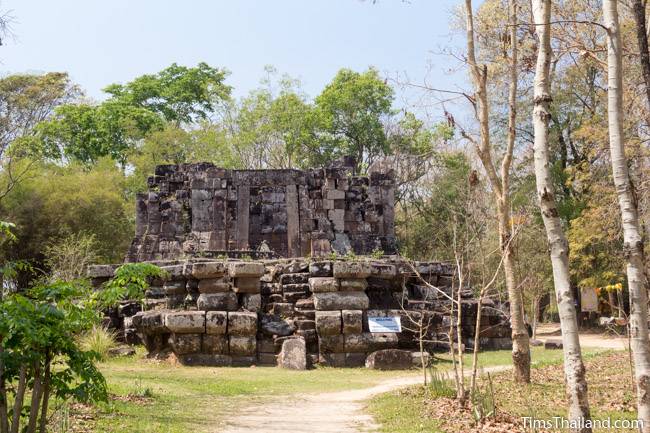
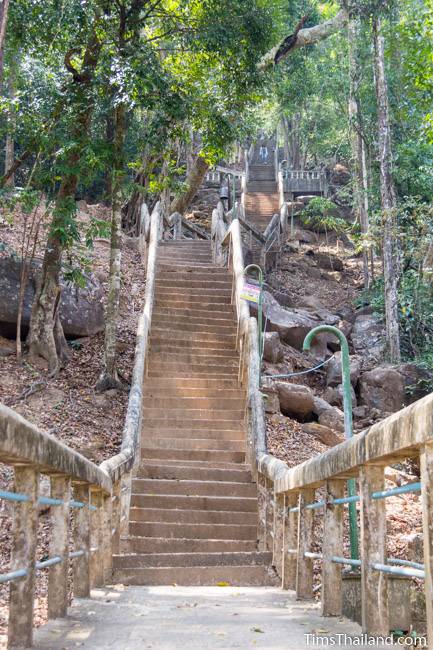
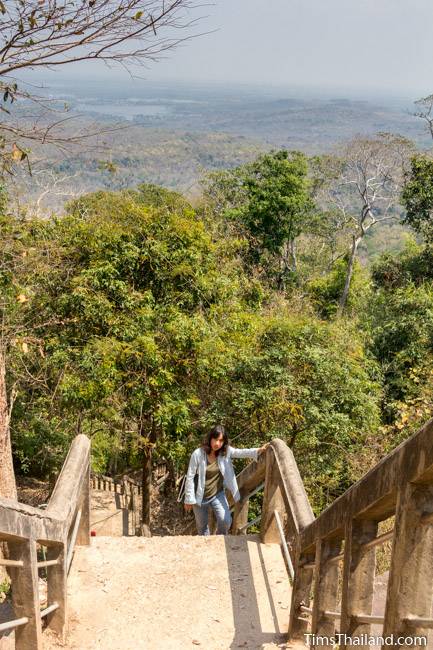
There are several viewpoints around the summit with beautiful scenery, even in the haze of the burning season, and some peacocks hang around the ruins. Overall the location makes a visit feel a bit adventurous, but the excessive signage (including several signs in Thai telling women on their period not to climb up on the temple) does a lot to ruin the atmosphere.
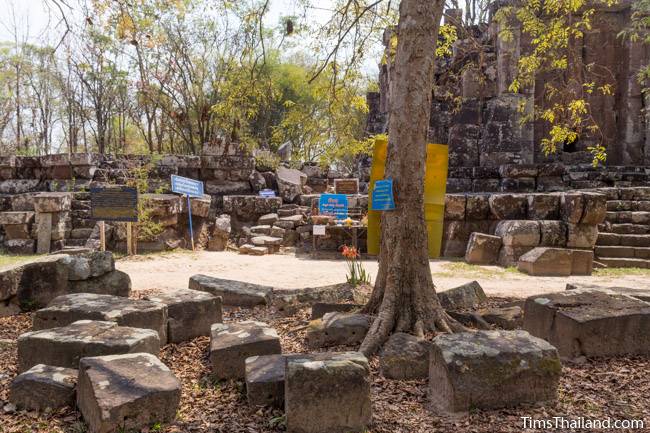
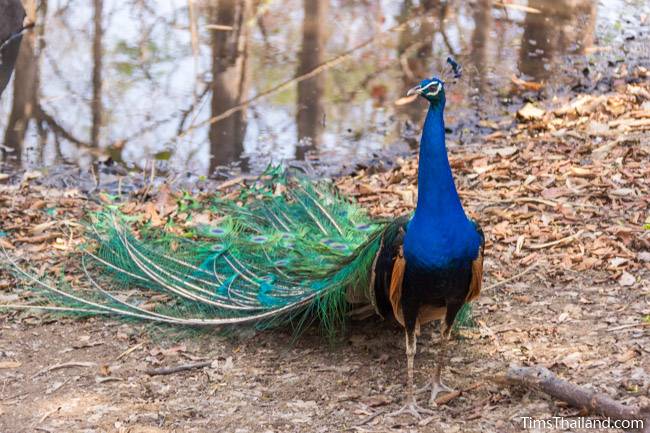
We know it was a Hindu shrine built for Shiva, but no inscriptions or carvings were found and construction was never completed, so exact dating is not possible. But based on the style (much of it fits with Baphuon) of what was built, it’s probably from the 11th century, though maybe the early 12th. It certainly could have been commissioned by Udayadityavarman II (r. 1050-1066) who built the nearby Phra That Narai Jeng Weng.
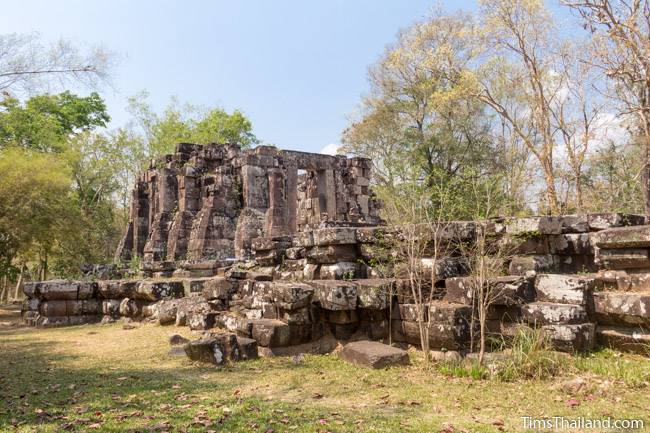
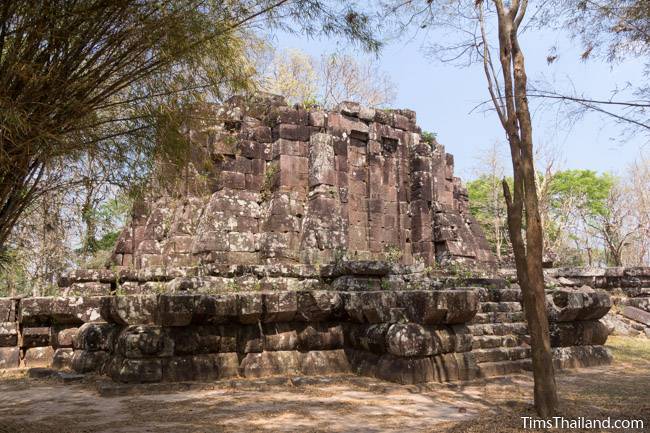
The sanctuary consists of a single east-facing grey and pink sandstone building whose tower was never built. Though not completed, this building is architecturally distinct and it’s clear just how big it would have been. The first thing you notice is the massive doorway, about four meters tall. The building also has deeply redented corners and is surrounded by angled blocks, presumably to provide stability for a soaring tower. A somasutra, the channel used to drain the holy water poured over the icons inside, runs out through the northern false door at an unusual height. Neither of the two large Buddha images inside (take your shoes off before climbing up) are old, but the small stone Buddha is a replica of an ancient one found here that is kept in the temple below.
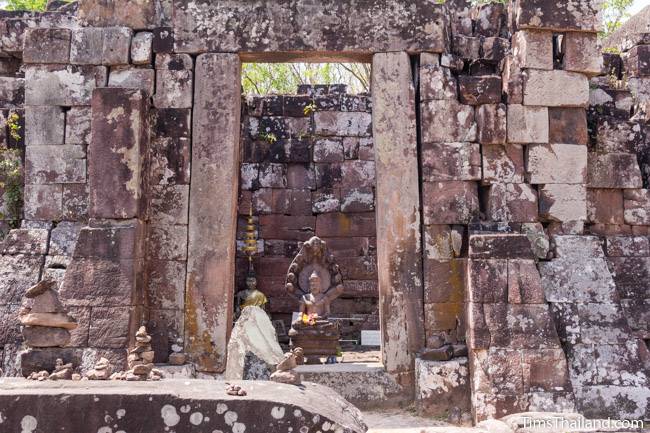
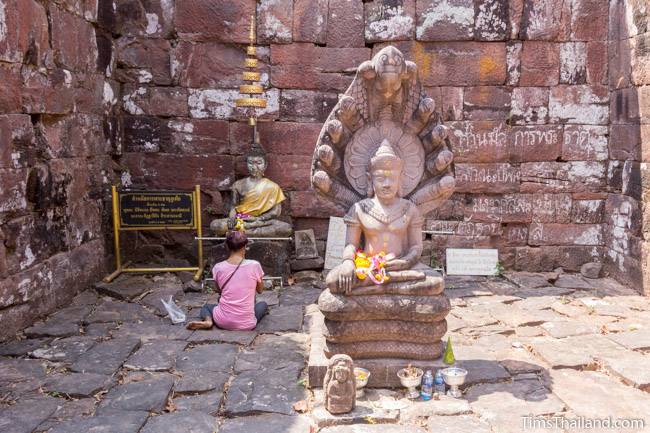
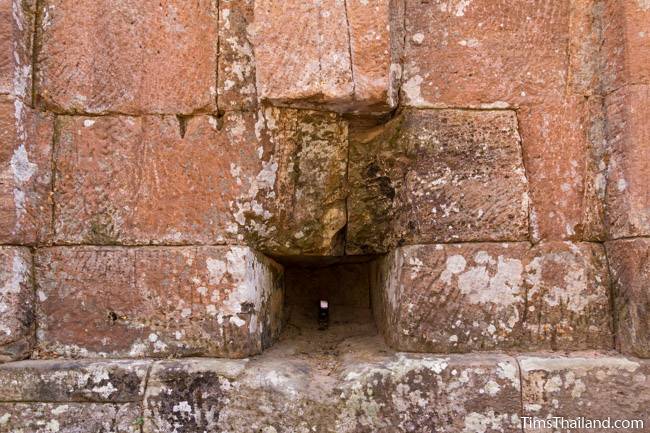
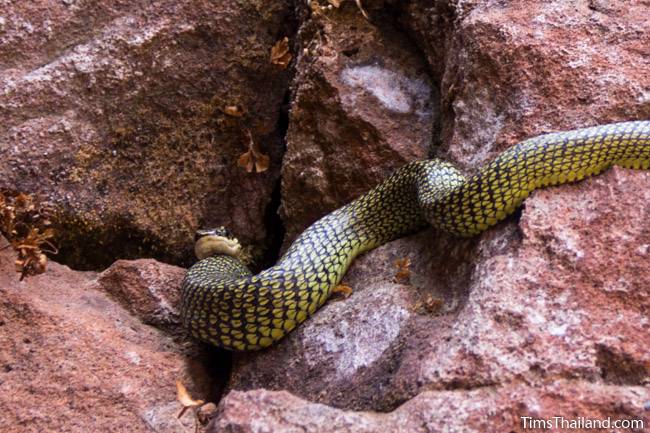
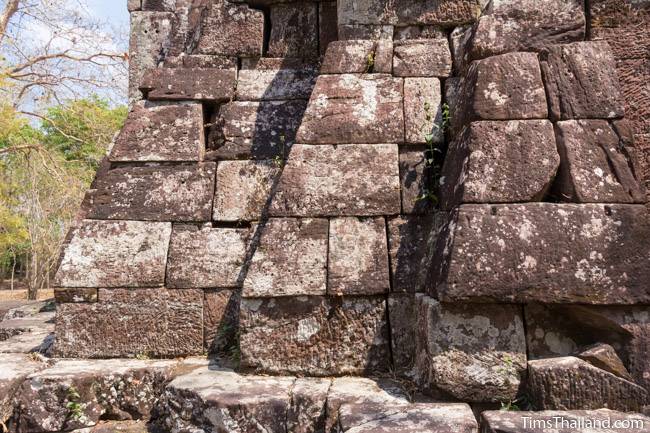
The platform in front of the tower is also very large, about the same size as that at Phimai, and had construction not been interrupted it would have held an equally large mandapa adjoined to the tower. This front platform is noticeably taller than the tower’s platform.
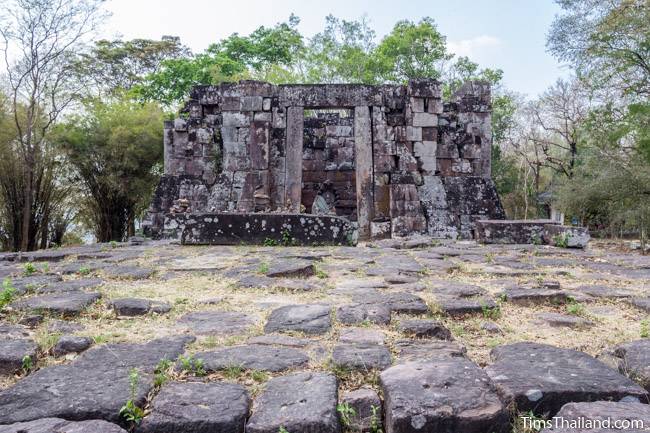
Two original Khmer artifacts – a square foundation stone and a massive Shiva linga – have been put on display right in front of the door. The foundation stone would have held auspicious items such as gold and gems and been put in the ground when the temple was dedicated. The Shiva linga would have been in the center of the room under the tower and used for making offerings. The top third of the linga is broken off and this round section was never found, but as is, it stands 1.3 meters tall.
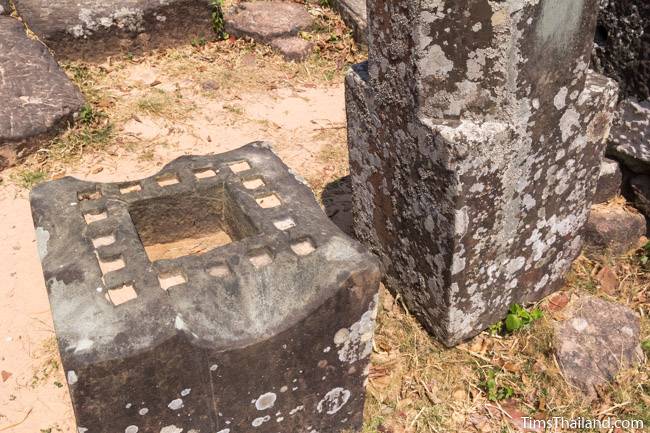
Some locals have gone to great lengths to prove that these two stones are not really a foundation stone and Shiva linga, but rather form an ancient solar calendar with some of the small squares aligned to equinoxes and solstices. Besides the fact that these objects are common in other Khmer temples (including some that don’t face east) actual research by Asger Mollerup has shown, as expected, that their math doesn’t add up. Unfortunately, this story has become a widely repeated “truth.” It’s not too surprising that these same dreamers have also, despite strong evidence against it, decided that Phra That Phu Phek was built by King Jayavarman VII (r. 1182-1219), who just happens to be the Khmer era’s most famous Buddhist.
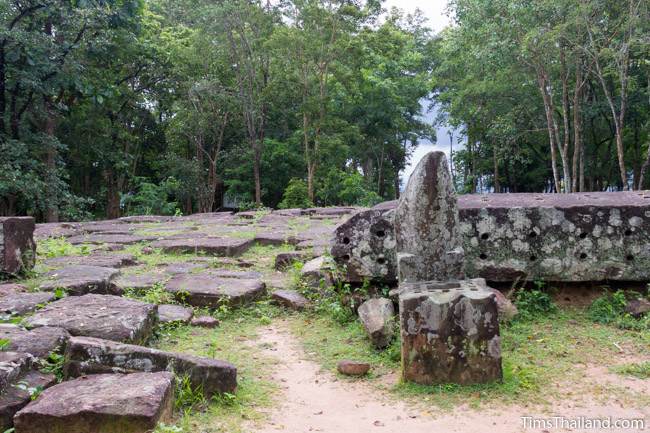
Two small ponds dug by the Khmer north of the tower still hold water throughout the year, though there are no other structures on the summit.
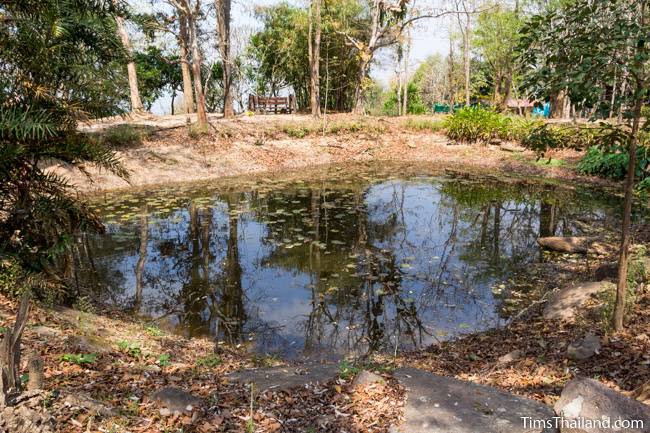
The stone walkway next to the modern staircase is not ancient. Also, many sandstone blocks are being used for barriers and walkways around the Buddhist temple at the base of the stairs.
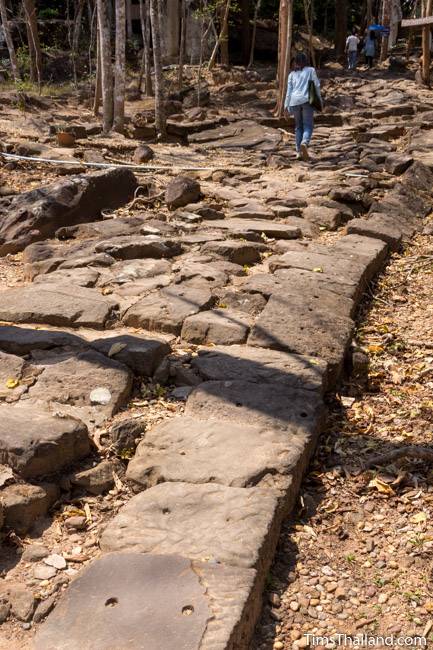
Phra That Phu Phek is part of a well-known legend that ignores the fact that these were built as Hindu temples. It says that one of the Buddha’s top disciples, Maha Kassapa, used to come from India to worship on this mountain and after the Buddha died he brought a breastbone relic here, so the local leader decided to build two stupas. He made it a competition between the men, who went to the mountain and built Phra That Phu Phek, and the women, who stayed near the city and built Phra That Narai Jeng Weng. Construction needed to be finished before the morning star (Venus) became visible and whichever was the most beautiful would enshrine the relic. The women won because they lit a tethered floating lantern to trick the men into thinking it was the morning star, so they stopped working; and this is why construction of Phra That Phu Phek was never finished. And it’s also where the name came from, “Phek” being an Isan word for Venus. (Stories of overnight building competitions won through morning star trickery like this are common in Southeast Asia. One is also told at Phu Phrabat.) A version of the legend told in faraway That Phanom says that the Buddha once visited Phu Phek mountain and while there he instructed one of his top disciples to send a breast bone relic to That Phanom after he died.
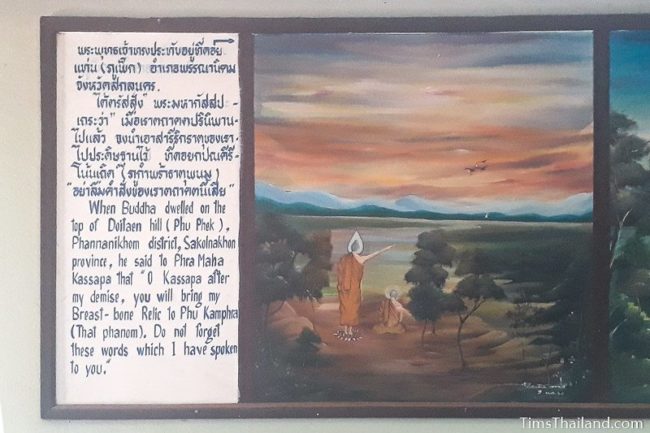
Sandstone Quarry
While the source of the sandstone for most of the Khmer ruins in Thailand can only be assumed, here there’s no doubt. The Phu Phek quarry (แหล่งหินตัดภูเพ็ก) is at the west end of the summit, just 400 meters behind the tower. Follow the easy, signed trail and turn right at the junction to reach the main area. There are a few other cuttings elsewhere on the mountaintop, but people are requested not to walk around here much since some monks live and meditate in this forest.
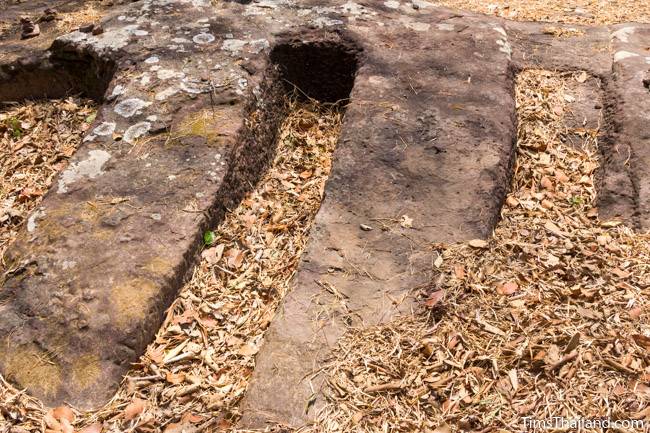
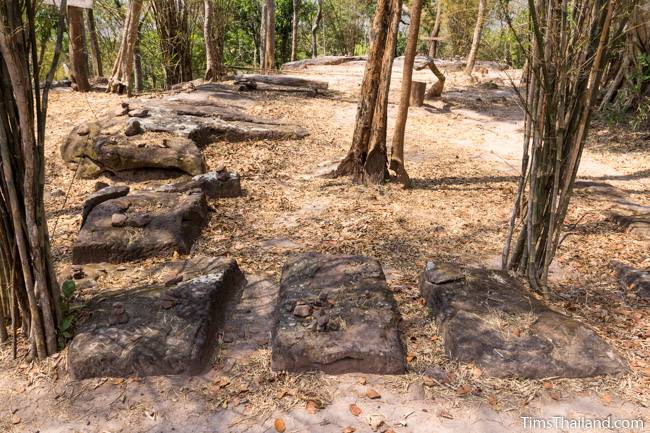
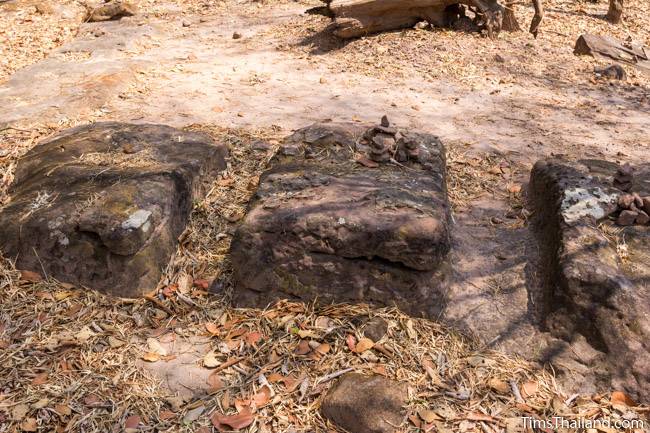
Stone Weir
As you drive up to the temple you’ll pass a large “Ancient Khmer Stone Weir (ฝายขอมโบราณ) 700m” sign pointing down a forest path. While just why the blocks are here and who placed them is unknown, a small dam certainly seems to be a plausible explanation. Overall it’s a pretty unimpressive jumble, and getting even more so as mud continues to cover the rocks as the years go by.
The unmarked trail gets indistinct quite quickly and doesn’t actually lead you to the site. You’ll need to go off trail for about the last 100m, so don’t go without GPS (it’s at 17.200344° N, 103.947126° E) and some basic trekking skills.
(Note that I visited the stone weir on a later trip to the area, in Dec. 2021.)
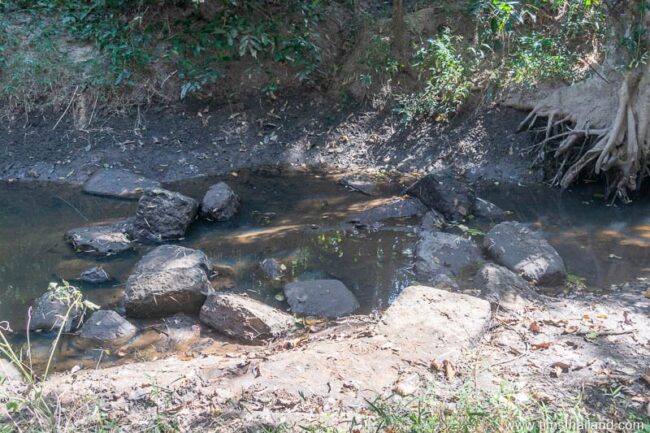
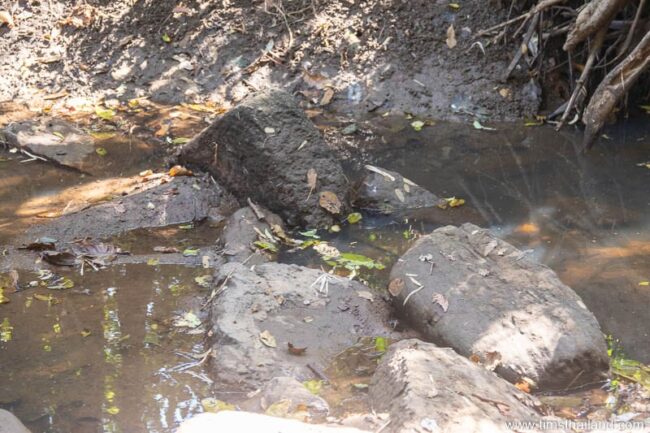
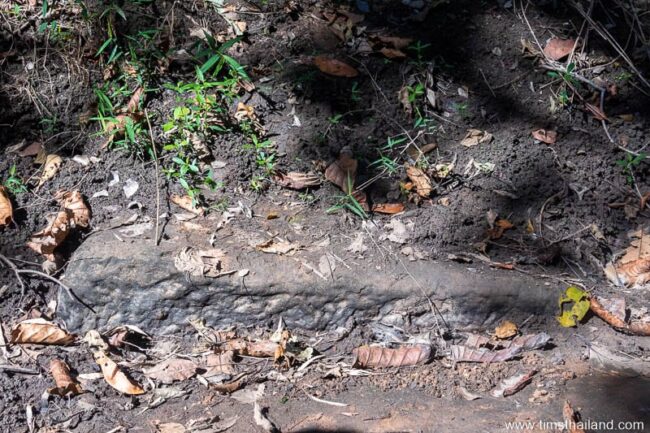
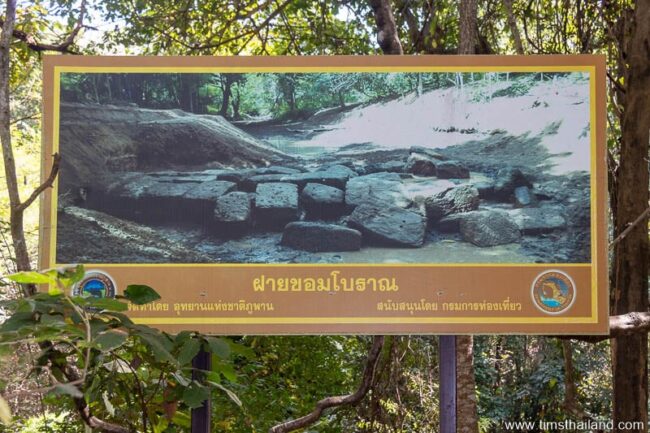
Location – Wat Phra That Phu Phek, Tambon Na Hua Bo, Amphoe Phanna Nikhom, Sakon Nakhon Province. The site is within Phu Phan National Park, but you don’t need to pay the park admission fee to visit the ruins.
Other Names – Phra That Phu Pek, Prasat Phu Phek (ปราสาทภูเพ็ก), Prasat Phra That Phu Phek (ปราสาทพระธาตุภูเพ็ก)